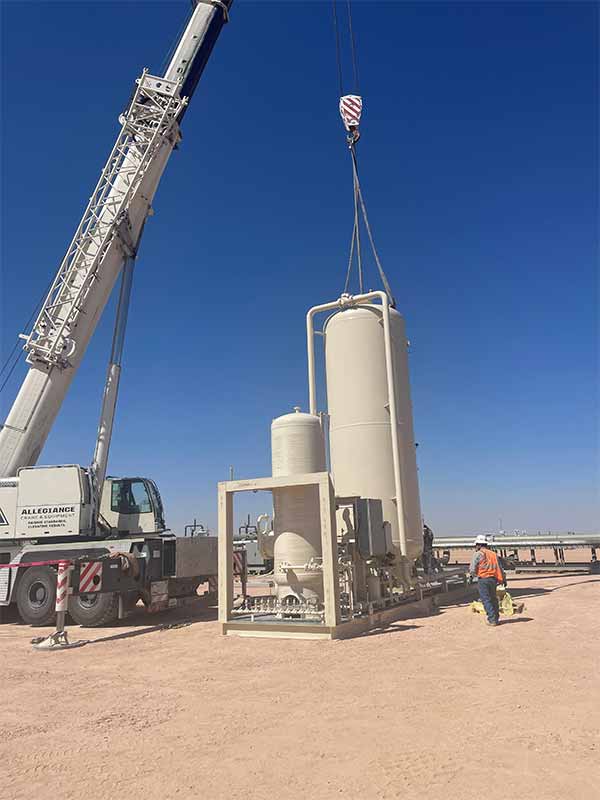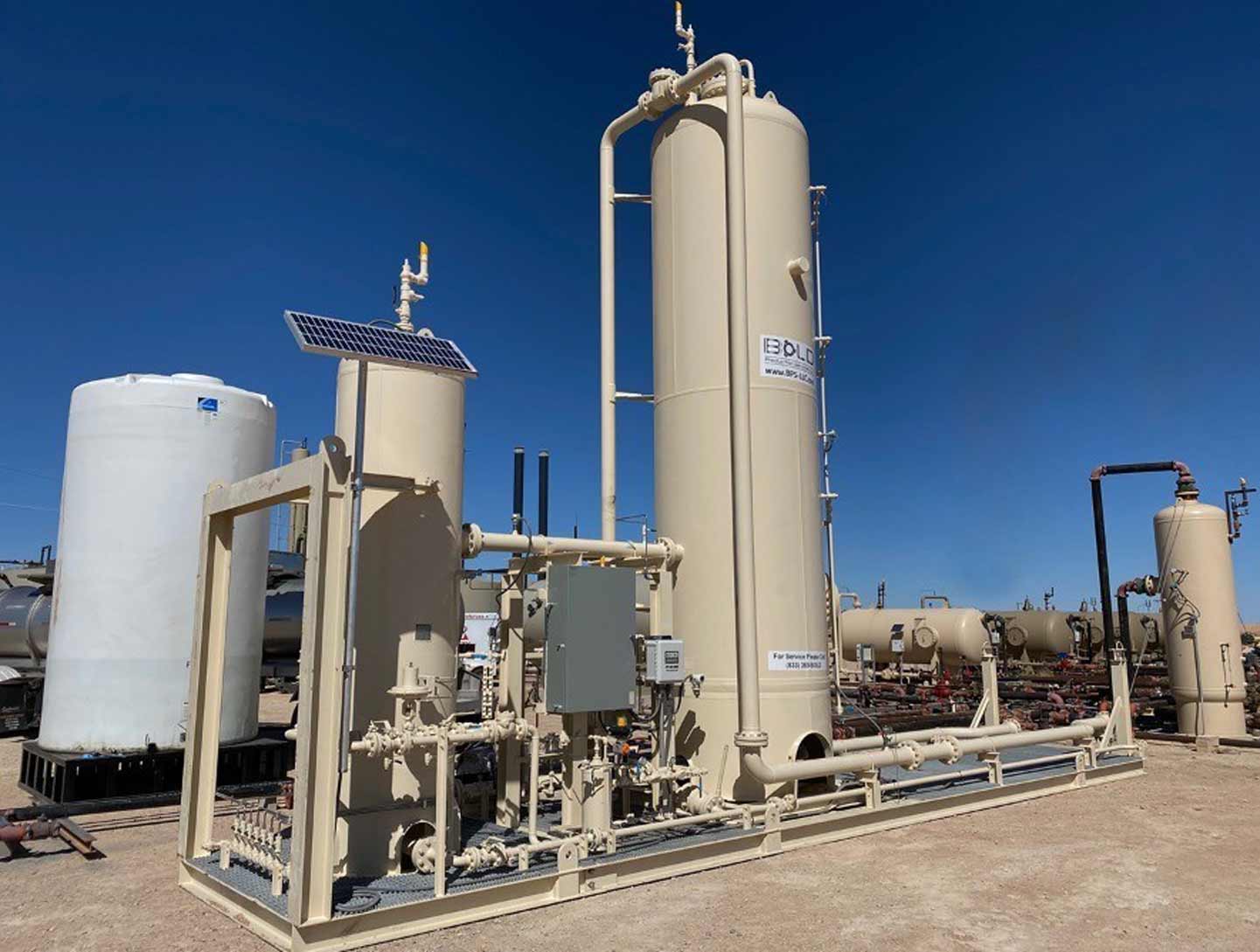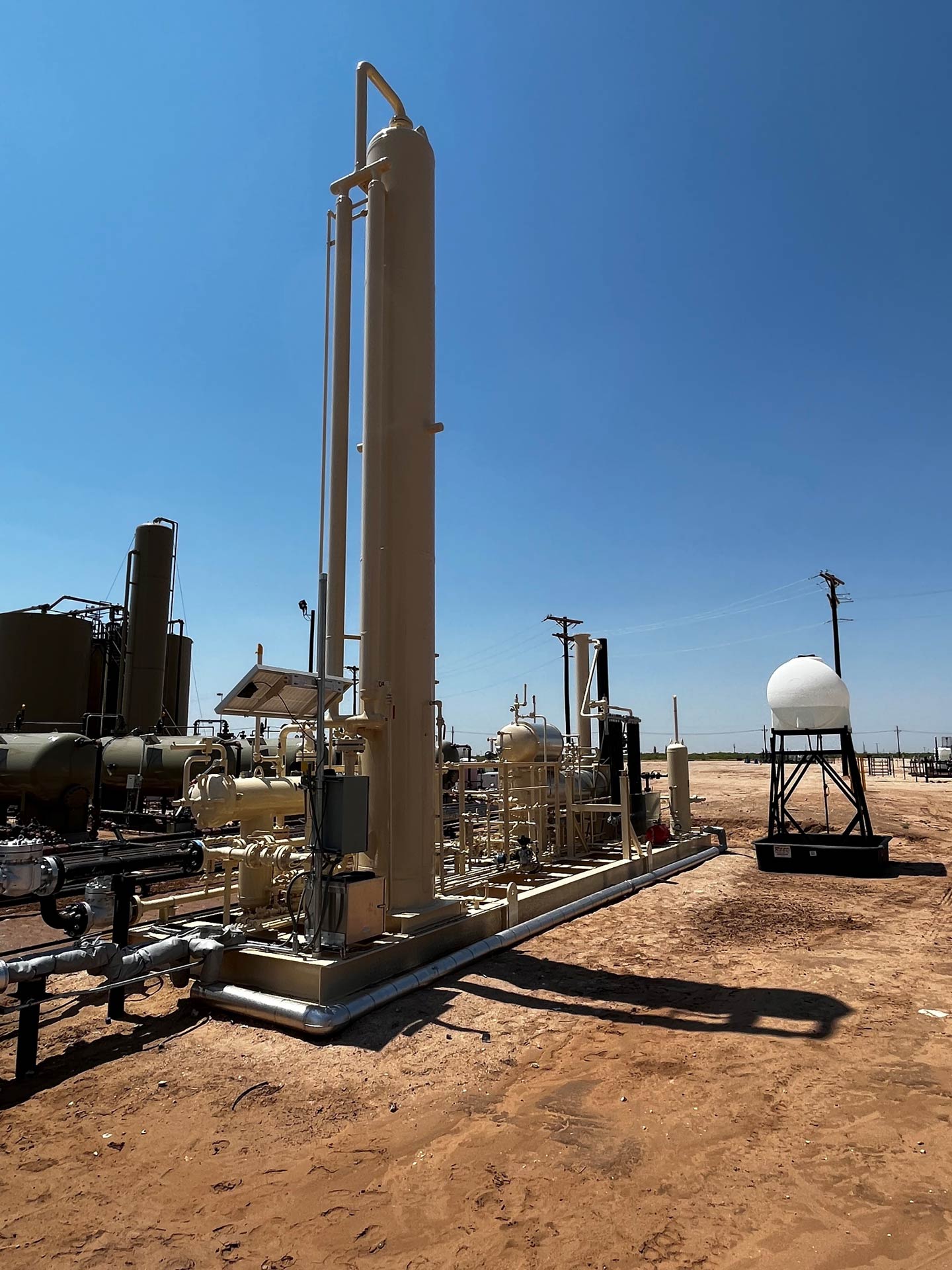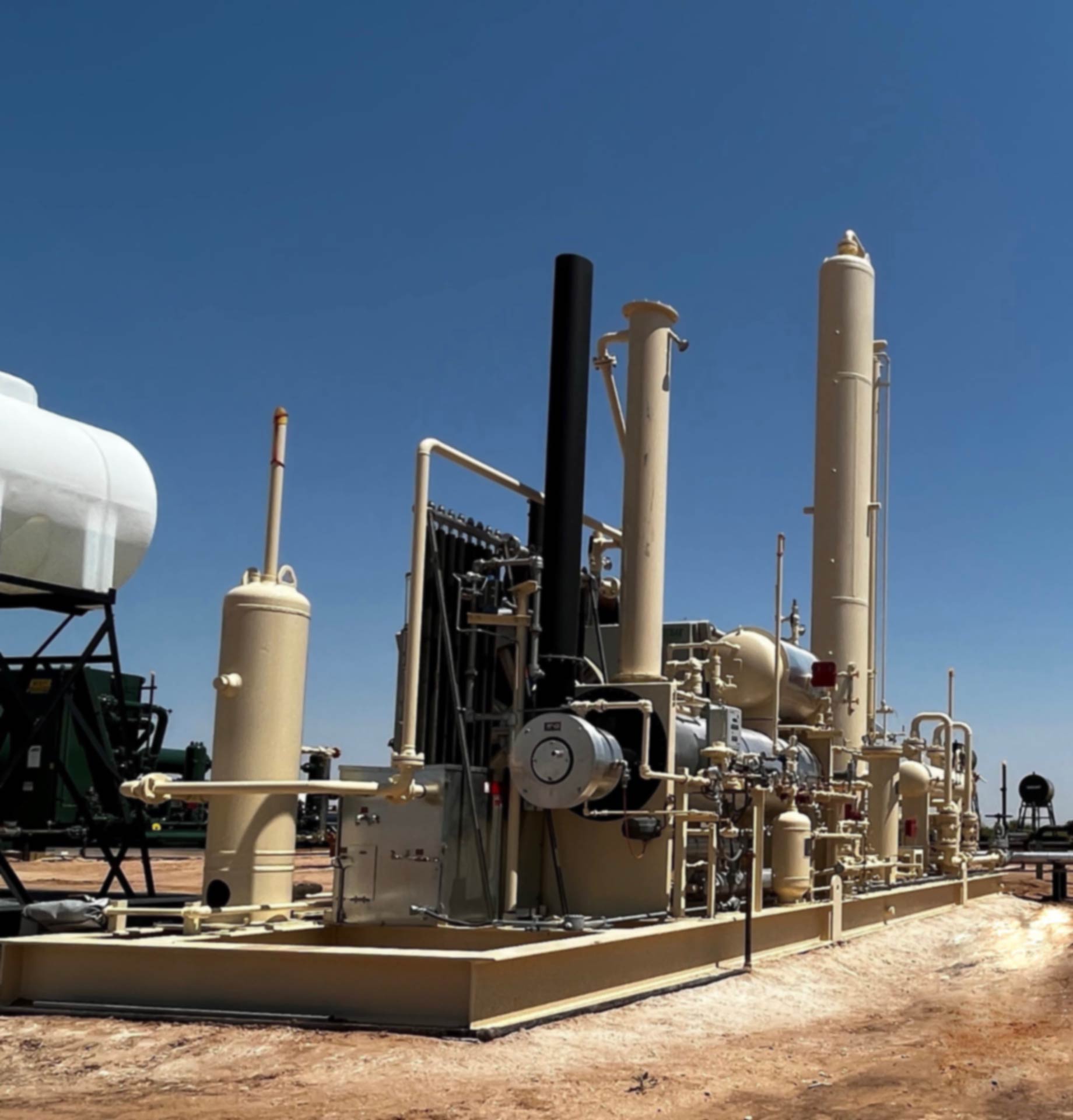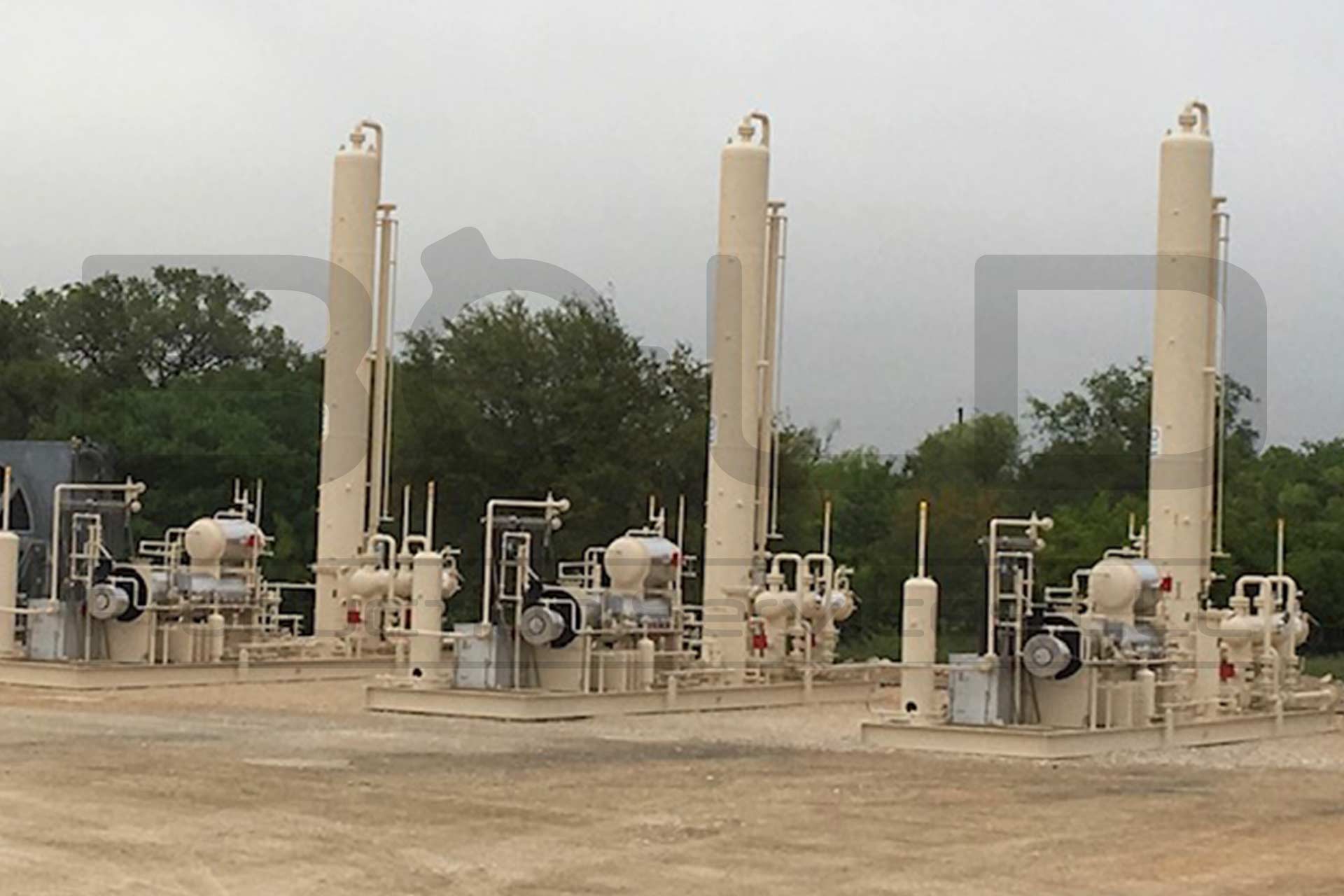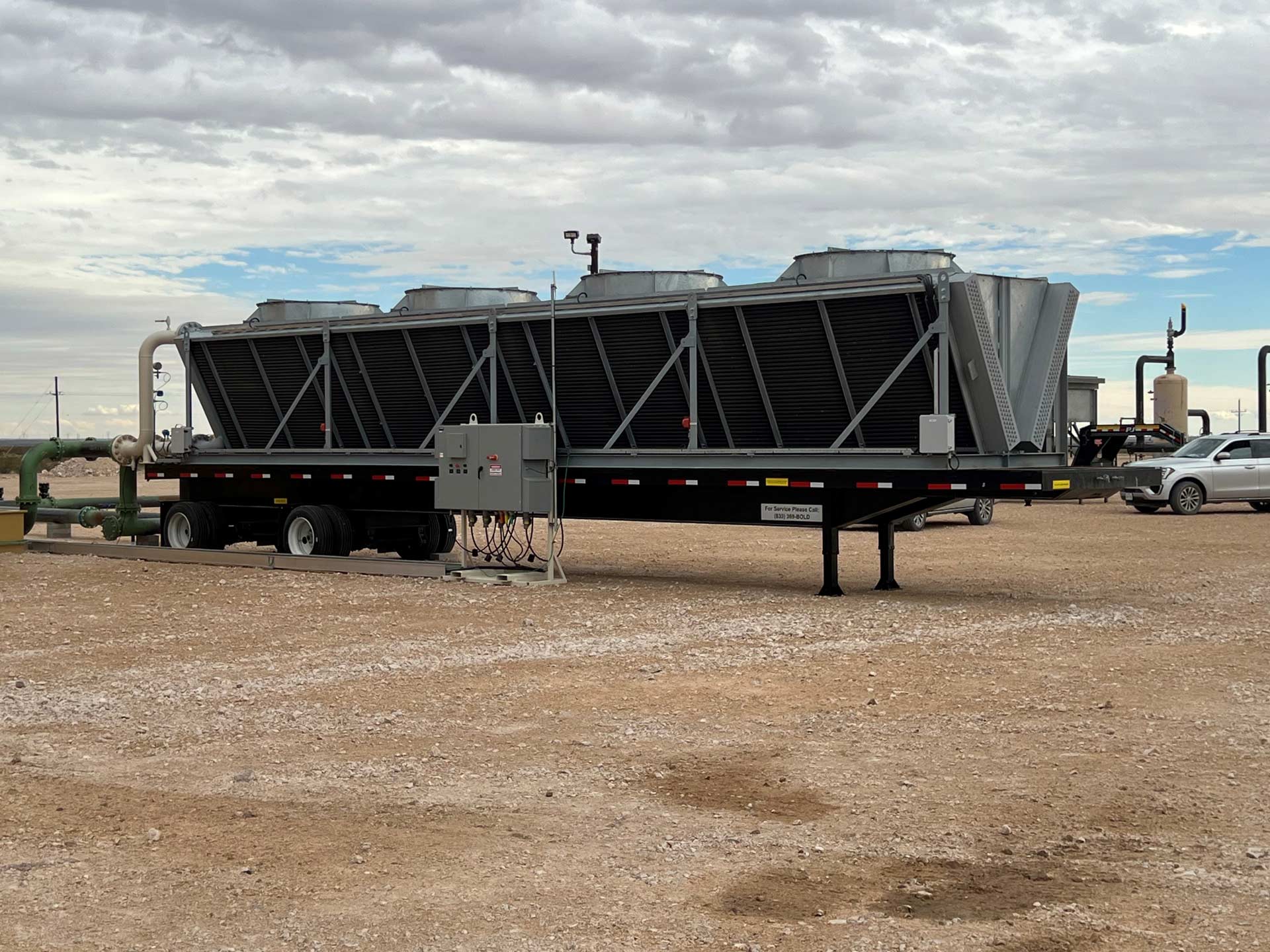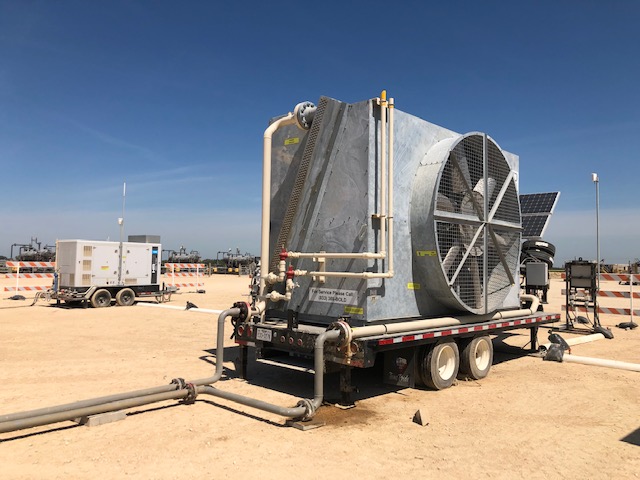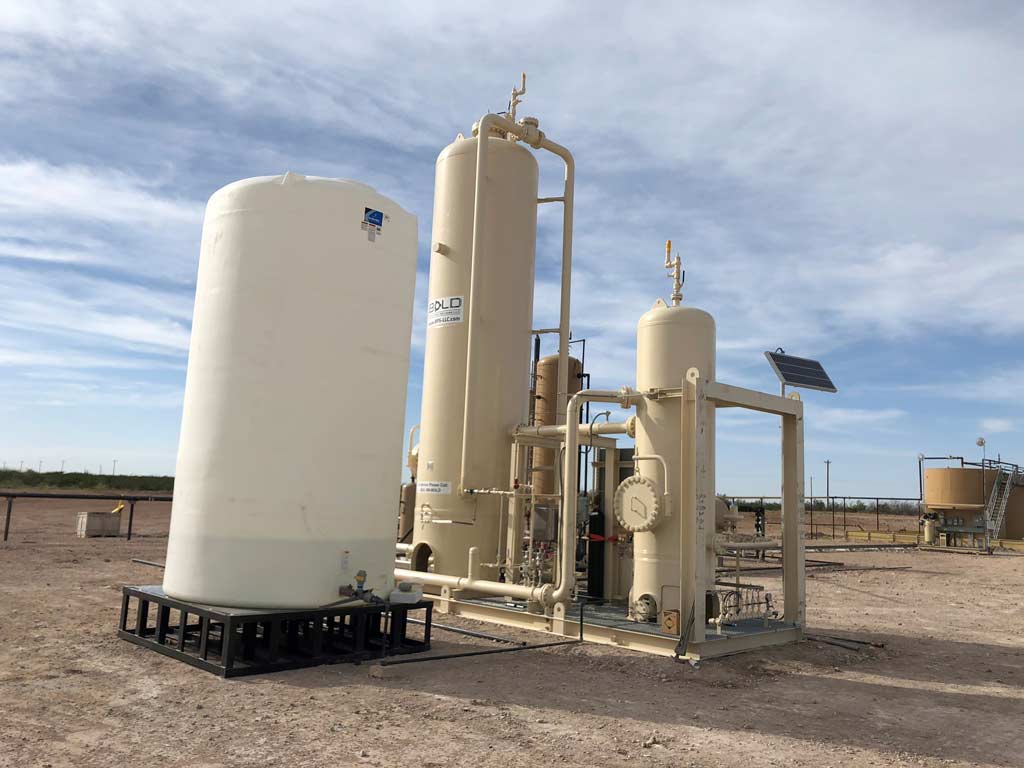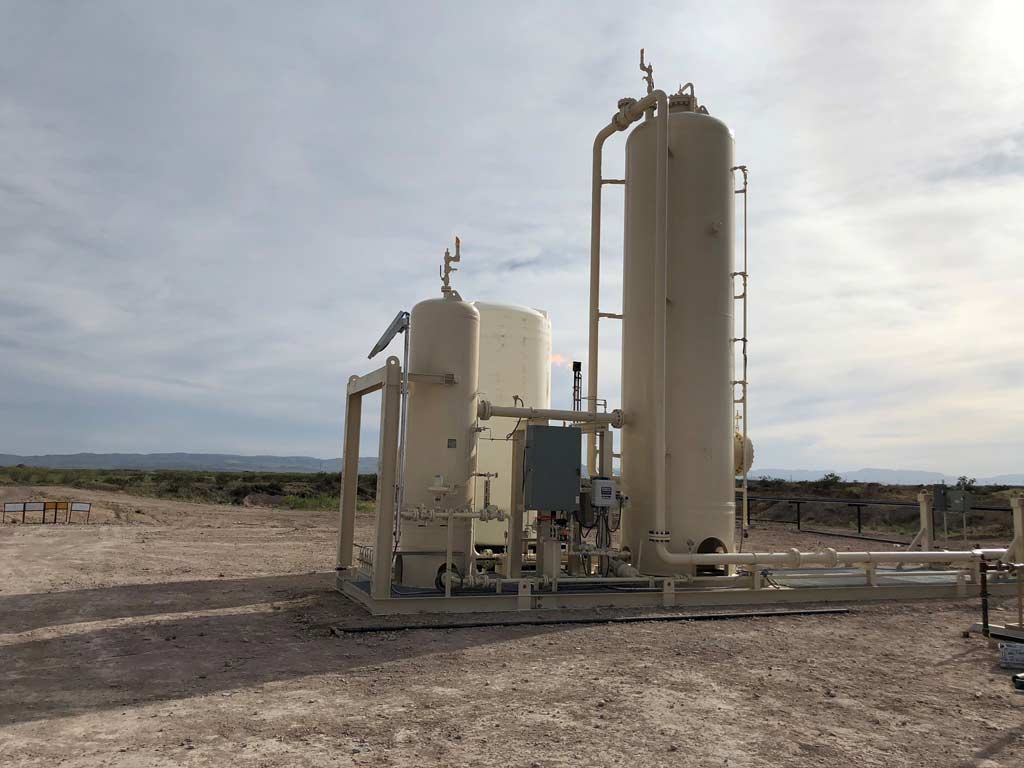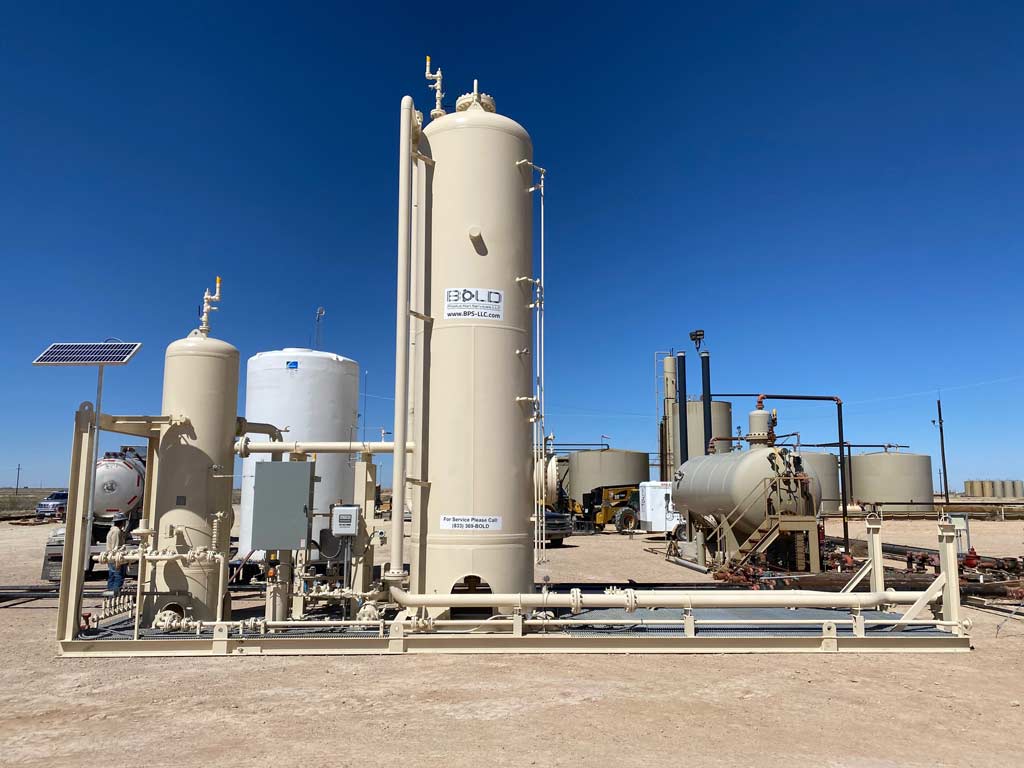B-Treat Overview
Bold’s Modular Continuous Treating Systems (CTS) are used to remove H2S from high and low pressure natural gas streams to eliminate dangerous H2S, protect pipeline systems and allow producers to market previously stranded gas streams. Bold’s CTS assets are modular skid mounted units which can be transported on one truck and installed on location in hours. Bold also provides a no-flare solution to treat our customers gas during preventative maintenance by providing a vessel that enables gas to continue to be treated and sent to the sales line instead of flaring.
How it Works
Gas streams flow through the CTS contactor where Bold’s proprietary scavenger chemical, SGT-281, removes the H2S from the gas stream. The gas then flows through an after scrubber where the spent chemical is dumped to the primary drain and the sweet gas is sent to the sales line.
The Bold Advantage
Capabilities
- Utilizes cloud-based platform to remotely monitor operations providing real time data, alarms, and reporting
- CTS units are NACE Compliant and built to ASME Code
- Bold offers multiple size assets to meet customer production needs ranging from direct injection, 42”, 48”, 72” and 96” low pressure and high pressure packages. Our FLEX units are the no flaring solution for our customers and the environment
Environmental Impact
- By eliminating flaring, Bold can significantly reduce our customer’s emissions footprint with our FLEX no flaring solutions.
- Our proprietary non-triazine based SGT-281 chemical, as well as FEC-50 and FEC-70 are non-hazardous and environmentally safe for disposal

